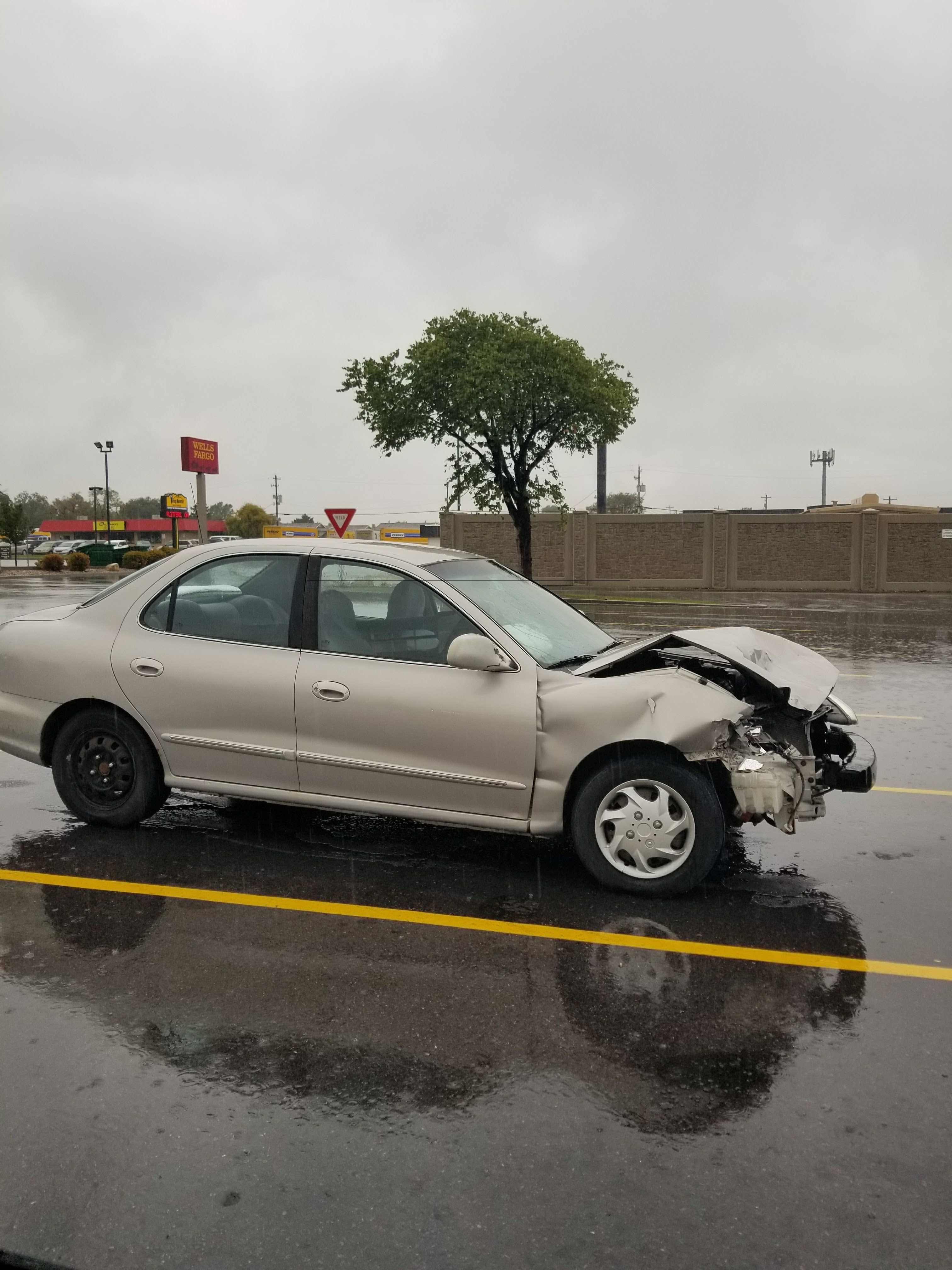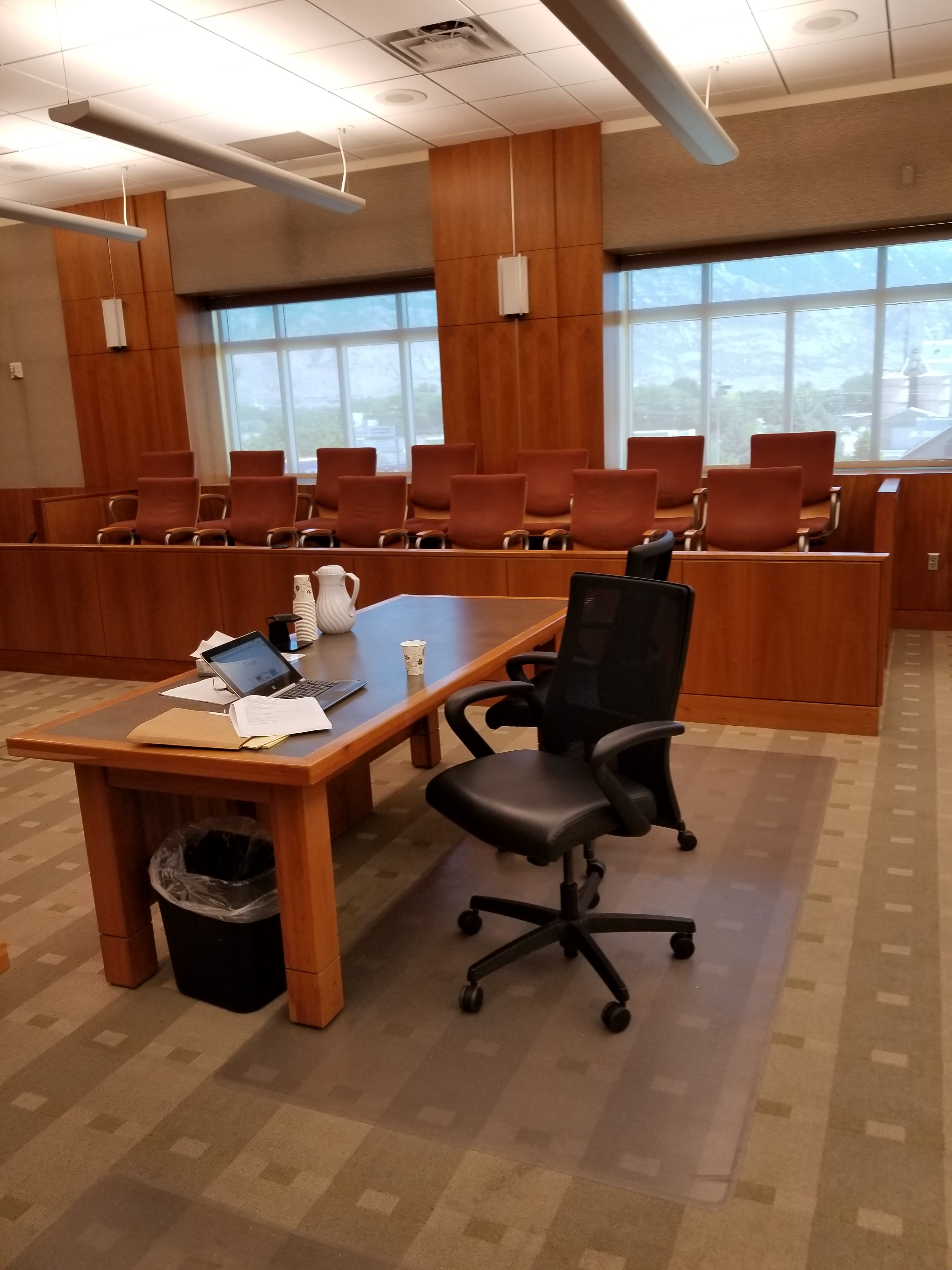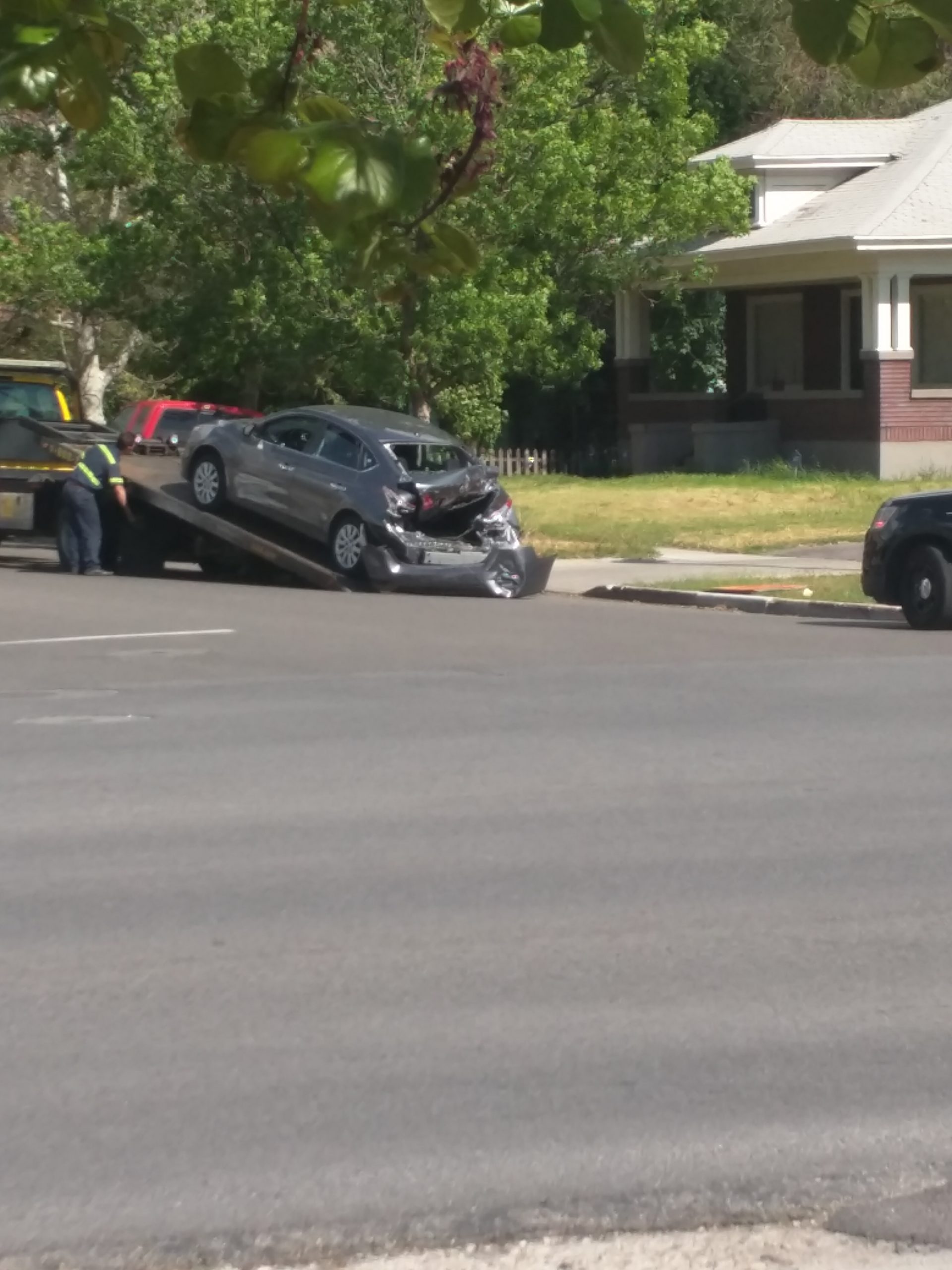Sometimes, like in rear-end car collisions, it is obvious who is at-fault for the Utah car collision. Again, drunk drivers who run red lights and cause serious injuries are clearly at-fault for the Utah car collision. But what about multiple car pile-ups on I-15? Or perhaps passenger claims between two different cars that collided? Or even left-hand turn cases?
Here are the top ways to understand how to prove you were not the at-fault driver in a Utah car collision, in no particular order:
Take pictures.
Today nearly everyone has a camera on their cell phone—use it. Take pictures of the property damage on all vehicles. Take pictures of the other party’s insurance card, their driver’s license, and all vehicle license plates. The location of the property damage on the vehicles can be very determinative in assessing who is at fault for the Utah car collision.
Example: When a vehicle is impacted in the rear bumper, squarely, it shows that it was a rear-end collision; thus, the person who was rear-ended was probably not at fault.
Example: Imagine a left-hand turn case where there is no traffic control device controlling when the left-hand-turning car can start turning left. If the left-hand-turning car has property damage on the front driver or passenger side bumper, this can be indicative that the turning car had hit the backside of on oncoming vehicle.
Example: Imagine another left-hand-turning car collision, but this time the turning vehicle has property damage on the rear passenger bumper. This could mean that the left-hand-turning car had almost completed its left-hand turn; this could mean the oncoming car hit the back of the turning vehicle and should have been paying more attention.
Example: In the instance of a T-bone collision, the damage may be near the back of the passenger side of the vehicle. Depending on where the bulk of the damage is, this can tell how long the vehicle was in the intersection before it was hit; whether the vehicle had already passed almost completely through the intersection, or just started on its way through the intersection.
Location of the Cars in Relation to the Intersection.


Sometimes when car collisions occur, the vehicles do not move a tremendous amount from the original impact location. Thus, if the car is directly in the middle of the intersection, or if they are impacted near the exit, the location can make a difference in who is at fault because it can show who was in the intersection first or which vehicle may have had the right-of-way.
Exchange contact information.
If you are not severely injured and can move without causing yourself further injury or pain, it is important to exchange insurance information. Normally, the police will do this for you once they arrive if they are called. Some minor collisions in which people feel fine for a few days, and then succumb to delayed onset of muscle soreness will regret not calling the police or exchanging information.
Contact the police.
This suggestion may seem obvious, but too often collisions take place, and the police are not called before one, or perhaps even both, parties have already left the scene. This causes serious problems later on when trying to find the at-fault party if injuries evolve. Your own insurance carrier will generally not payout a hit-and-run claim if you failed to obtain the at-fault driver’s information or call the police.
When in doubt on whether you should call the police or not, at least call your local dispatch so there is a record that a Utah car collision occurred and you can relay that to your Utah personal injury attorney later.
Speak to witnesses.
If you are medically able to, you should speak with witnesses who have stopped at the scene of the incident. Take a picture of their driver’s license, license plate, or write down their contact information. If you can move around, let the police officer know that there were witnesses and how to contact them.
Your Utah personal injury attorney should immediately be assessing who and where the witnesses were for future use in determining fault, should fault be disputed.
Retain an attorney.


Retaining an experienced Utah personal injury attorney early can help you preserve evidence you would not normally think of in determining fault. For example, finding local police and jail booking footage, outdoor cameras from local businesses, re-visiting the scene to take photos of property and road damage or skid marks, and interviewing witnesses. Your memories and witness memory may fade and testimony should sometimes be recorded or written down for future use. Many evidence preservation items can be saved by hiring a Utah personal injury attorney immediately after the car collision.
Police Determinations.
Remember the reporting police officers were not at the collision when it happened. They are only gathering information secondhand. At the scene, it is their job to gather witness testimony, complete a rough incident reconstruction, and then personally determine who is at fault.
Admissions.
Not making admissions of fault at the scene of the collision is not rude, it is prudent. You will not know what else has happened in the collision which could have influenced the outcome that you were not aware of.
Accident reconstructionists.
Accident reconstructionists are specially-trained individuals who reconstruct a collision scene through the use of skid marks, property damage, speed limits, estimated speeds, and vehicle manufacturing properties. Reconstructionists are supposed to help the jury understand the dynamics behind the collision in determining who is at-fault.
Skid marks.
Skids marks fade with time. If you don’t hire an attorney to time stamp the accident scene, skids marks may be lost forever and could have helped determine the at-fault party.
The quality of your attorney.
Having the best Utah personal injury attorney is ideal. Having a Utah personal injury attorney who regularly practices personal injury matters equally. An attorney who regularly handles personal injury cases will get you better results than an attorney who only dabbles in the sphere of personal injury. An even better Utah personal injury attorney is someone who regularly handles car collision cases and takes them all the way to a jury trial. Most attorneys don’t regularly handle Utah personal injury cases. For those that do regularly handles case, most don’t try them to a civil jury.
The bottom line is hire a personal injury attorney who regularly handles car collision cases and takes them all the way to a jury trial. That type of Utah personal injury attorney will get you the best results.
Left hand turns.
In Utah, the law favors oncoming traffic when a collision occurs between a car making a left-hand turn versus oncoming traffic. Most of the time the car taking the left-hand turn will be assessed the majority of fault and is thus responsible. Sometimes you can prove that oncoming traffic was speeding or ran a red light and is thus at fault.
Rear-end car collisions.
Most of the time when you are rear-ended, the person who hit you from behind is at-fault. This does not mean that you can stop erratically in front of cars stacked up behind you and claim the other party was at-fault.
Passenger claims.
If you are a passenger in a car that is involved in a Utah car collision, you are rarely, if ever, at fault. If you were to grab the wheel as a passenger while drunk, and a collision results, you would be assessed fault. But this is an incredibly rare situation.
Normally, fault is assessed against the driver of the car you are in, and against the other driver who collided with the car you are in. As a passenger, you may be eligible for settlements from both vehicles’ insurances.
Witness Statements.
Police witness statements will bind a witness to at least some form of the events of the collision. Sometimes, you can gather witness statements from witnesses who were listed on the police report, but never produced their version of the car collision on paper for the police.
Local cameras.


Local business camera footage needs to be saved immediately. Local businesses don’t have a lot of data room and will often recycle after 7 days, unless an incident is reported. The same goes for public schools. Jails and police will generally hold the camera footage for much longer, but some footage erased after one year.
The jury or judge findings.
Ultimately, if you and the insurance company for the other driver can’t come to an agreement of settlement, a jury of your peers will make the at-fault decision for you. Whether the light was red or green, or the extent of your injuries, if disputed, will ultimately be decided by the jury.
Comparative fault rules.
Sometimes, one party is completely at-fault for the car collision, as it is in a rear-end collision. Other times like a left-hand turn collision, both parties can bear some fault for the collision. This latter situation is called comparative fault.
Example: The jury determines that you were rear-ended and the other car was 100% at-fault and awards $100,000 in money damages. You will receive all $100,000 in money damages without any type of fault reduction because the jury determined you had no fault in the collision.
Example: The jury determines that the car turning left in front of you was at fault for the collision. The jury determines that you were speeding a bit, thus delaying your breaking ability and apportions 20% fault to you and 80% fault to the car turning left. The jury awards you $100,000. You will only receive a reduced $80,000 to reflect your 20% of assessed fault by the jury. The judges does this offsetting after the jury awards a damages amount and fault apportionment.
UTAH COMPARATIVE FAULT RULE:
In Utah, you cannot be 50% or more at fault for a car collision, or you recover nothing. If you are 49% at fault, you will recover what the jury awards you in money damages, reduced by your degree of apportioned fault. Utah is called a “51% fault state.”
CALL UTAH PERSONAL INJURY ATTORNEY JAKE GUNTER AT (801) 373-6345 FOR A FREE CONSULTATION REGARDING YOUR UTAH CAR ACCIDENT INSURANCE CLAIM.
